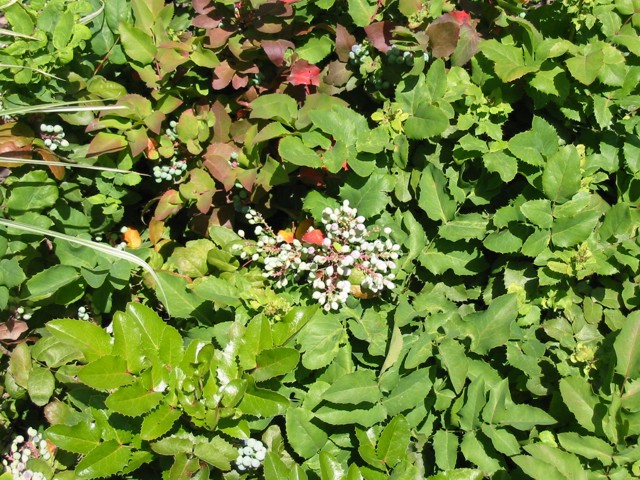| PSC 2620: Woody Trees and Shrub | Course Home | Week 9 |
Mahonia repens - Creeping Mahonia
Plant Viewer
 |
 |
| Creeping Mahonia is a low and spreading semi-evergreen shrub. | The leaf is odd pinnately compound with a glossy leaf. The margin of the leaf has spines. Image: Andre Karwath |
 |
 |
| Yellow flowers form in spring. They are generally not as showy as Mahonia aquifolium. Image: Stan Shebs | The blue berry fruits ripen in the fall in small clumps. Image: Stephen Lea |
Plant Description
Mahonia repens is very similar to Mahonia aquifolium except in form and size. Creeping Mahonia, as its common name suggests, is more prostrate in nature and is often used as a groundcover. It needs a shaded location that is protected from wind and prefers acidic soils.
The leaves and leaflets are slightly smaller than those of Oregon Grape. The leaves are odd pinnately compound leaves are 4-9 inches long with leaflets only growing up to 2 1/2 inches long. The leaflets have spiny margins. Mahonia repens seems to be more evergreen than Oregon Grape, especially when growing along the ground where it is insulated some.
Small racemes of yellow flowers appear in the spring. In the summer, black-blue fruit forms. The berry fruit is 1/4 inch in diameter and forms in clumps like grapes. The fruit will persist into the winter.
Landscape Use
Use as a groundcover or as a climbing vine where support is provided. It needs to be kept out of full sun.
Points of Interest
Leaf rust, leaf spots, leaf scorch and leaf burn are all problems. In our climate, leaf scorch in particular is problematic on plants planted in full sun.